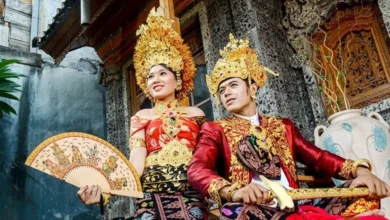What is the Kebaya?
The kebaya is a traditional blouse-dress ensemble originating from Indonesia, celebrated for its intricate designs and cultural significance. It is predominantly worn by women and serves as a representation of elegance, femininity, and heritage. Historically, the kebaya has evolved to incorporate regional influences and modern trends, yet it remains a deeply rooted emblem of identity.
Worn during both everyday life and special occasions, the kebaya transcends mere clothing. It carries a cultural narrative, showcasing the craftsmanship of Indonesian artisans. The materials, patterns, and embroidery symbolize the diverse traditions across the archipelago.
Historical Origins of the Kebaya
The kebaya’s origins date back centuries, with its earliest forms influenced by trade interactions across Asia and Europe. Scholars trace the kebaya to the Majapahit Empire (13th–16th centuries), where women adorned themselves with lightweight tunics. Over time, Portuguese and Dutch colonists brought European fashion elements, influencing the kebaya’s design.
By the 16th century, the kebaya became a staple among Javanese royalty. During the Dutch colonial period, it gained popularity among both native Indonesians and Eurasians, blending local craftsmanship with foreign styles. Its resilience as a symbol of identity during colonial rule cemented its cultural importance.
See also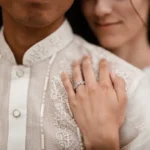 Traditional Filipino Clothing: The Legacy and Elegance of Barong Tagalog
Traditional Filipino Clothing: The Legacy and Elegance of Barong Tagalog
Materials and Fabrics Used in Kebaya Design
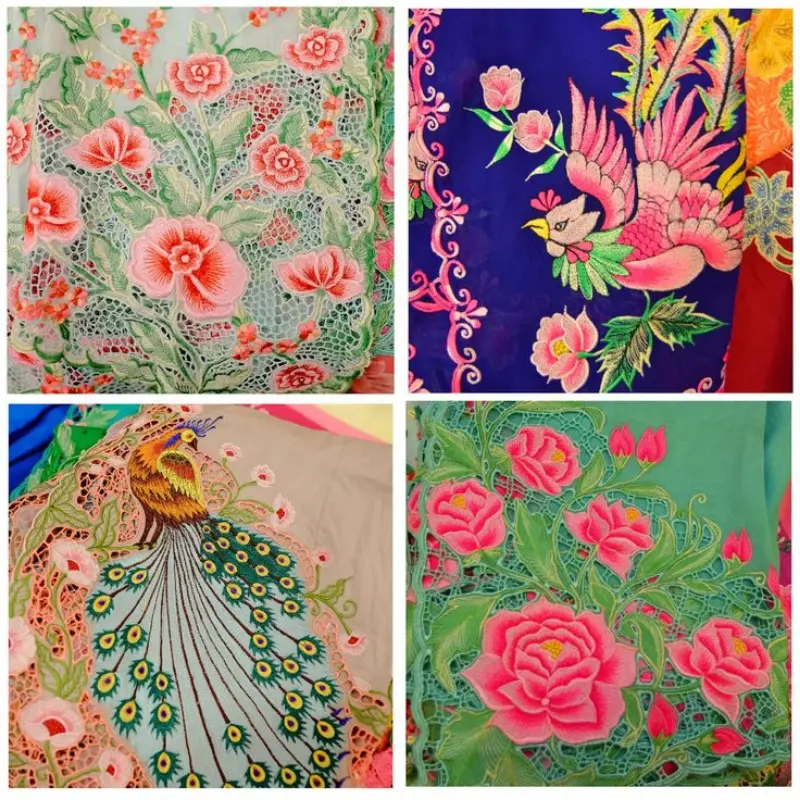
A kebaya can be made from various fabrics, each chosen for its texture, symbolism, and suitability for the occasion. Common materials include:
- Silk: Known for its luxurious feel, silk kebayas are reserved for formal events.
- Cotton: A breathable and lightweight option, ideal for daily wear.
- Lace and Tulle: Widely used in modern kebayas to add an element of elegance.
- Batik: A hallmark of Indonesian textiles, batik patterns are often incorporated into kebaya designs to reflect regional heritage.
The choice of fabric also reflects the wearer’s social status and the intended use of the kebaya. Embellishments like beads, sequins, and intricate embroidery further enhance the garment’s aesthetic.
Styles and Variations Across Indonesia
Indonesia’s diverse regions contribute unique interpretations of the kebaya, reflecting local customs and aesthetics.
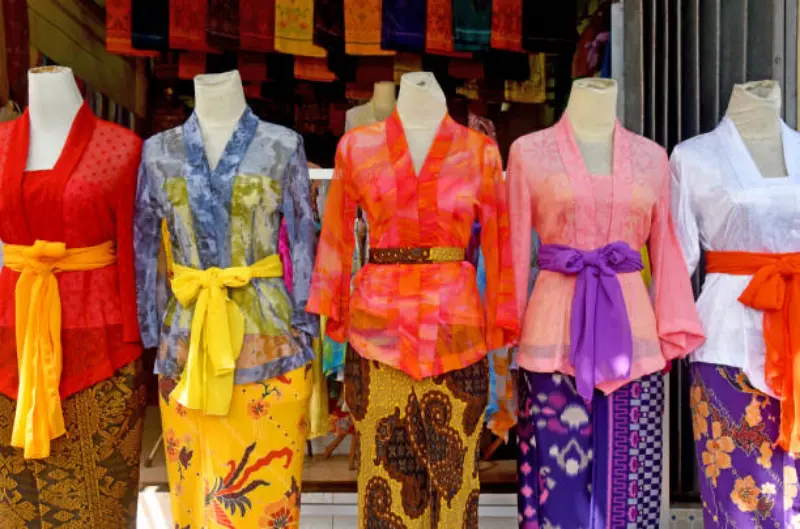
The Javanese Kebaya
Javanese kebayas are known for their understated elegance, often featuring pastel hues and floral embroidery. The blouse is paired with a batik sarong, completing a graceful ensemble.
See also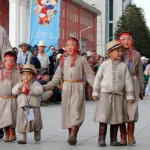 The Timeless Elegance of Mongolian Deel: Traditional Clothing Redefined
The Timeless Elegance of Mongolian Deel: Traditional Clothing Redefined
The Balinese Kebaya
Balinese kebayas stand out with their vibrant colors and fitted designs, often accessorized with a sash tied around the waist. These are commonly worn during temple ceremonies and cultural festivals.
The Sundanese Kebaya
The Sundanese kebaya, popular in West Java, is characterized by its simplicity. Light fabrics and modest patterns make it suitable for both casual and formal settings.
Modern Kebaya
Modern adaptations of the kebaya integrate contemporary fashion elements like asymmetrical cuts, metallic fabrics, and minimalist embroidery. These styles are favored by younger generations, blending tradition with modernity.
Symbolism in Kebaya Designs
The kebaya’s design elements hold profound cultural and symbolic meanings.
- Floral motifs: Represent femininity, beauty, and fertility.
- Geometric patterns: Convey balance, harmony, and unity.
- Gold embroidery: Denotes wealth and prosperity, often reserved for weddings or formal events.
Each kebaya tells a story, with the colors and patterns reflecting the wearer’s personality, region, and occasion.
The Kebaya as a National Identity
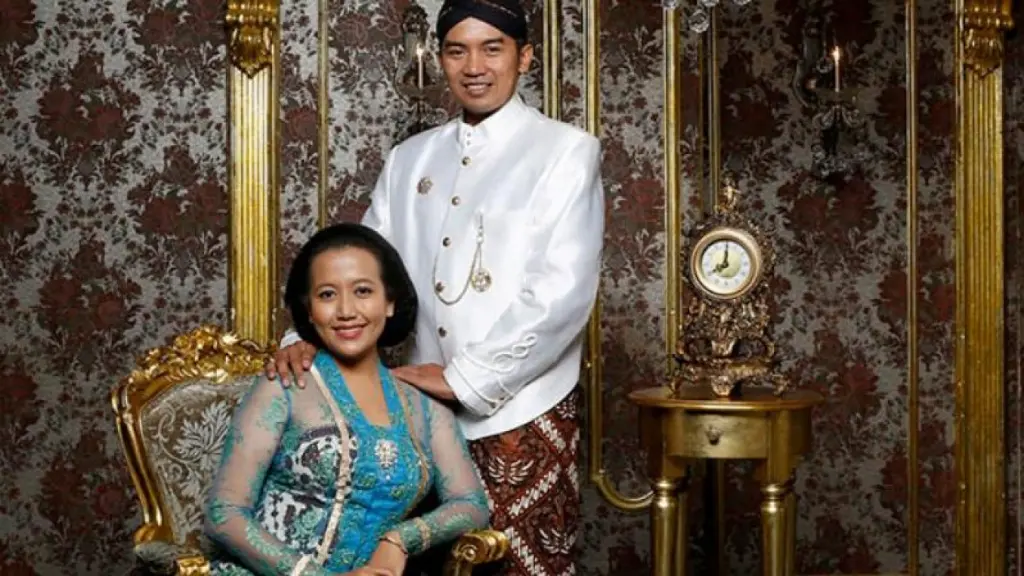
The kebaya is more than traditional clothing—it is a symbol of Indonesian unity and pride. Its adoption as the national dress for women highlights its role in preserving cultural heritage. During National Batik Day and Kartini Day, women across the country proudly don kebayas to honor Indonesia’s rich history.
Kebaya in Ceremonial and Religious Contexts
The kebaya plays a vital role in ceremonial and religious events across Indonesia.
- Weddings: Brides often wear intricately designed kebayas adorned with gold and pearls.
- Religious ceremonies: Balinese Hindu women wear vibrant kebayas during temple offerings.
- Cultural festivals: Traditional dances and performances feature the kebaya as a central element.
These occasions underline the kebaya’s versatility and its deep integration into Indonesian culture.
How the Kebaya is Made: Craftsmanship and Techniques
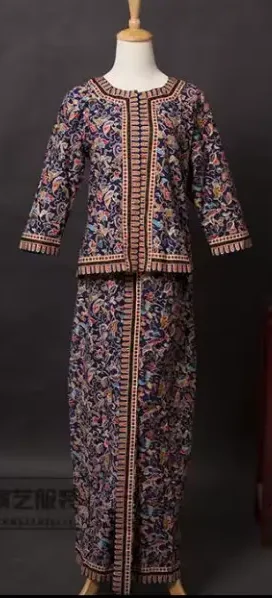
The creation of a kebaya involves meticulous craftsmanship, blending traditional methods with modern innovations. Key techniques include:
- Pattern drafting: Ensuring the blouse fits the wearer perfectly.
- Embroidery: Adding decorative motifs, often handmade to highlight artistry.
- Fabric dyeing: Especially for batik kebayas, which require intricate dyeing processes.
Each kebaya is a labor of love, reflecting hours of dedication by skilled artisans.
The Influence of Global Fashion on Kebaya
In recent decades, the kebaya has gained international recognition. Indonesian designers have showcased it on global runways, blending traditional elements with modern silhouettes. Celebrities and diplomats have worn kebayas at international events, elevating its status as a fashion icon.
Modern Revival and Popularity
The kebaya’s resurgence among younger generations signifies its adaptability and enduring charm. Social media platforms like Instagram and TikTok have popularized innovative ways to style the kebaya, making it appealing to a global audience.
Sustainability and Ethical Aspects
As a handcrafted garment, the kebaya aligns with sustainable fashion principles. Supporting local artisans who produce kebayas helps preserve traditional craftsmanship while promoting ethical practices in the fashion industry.
Where to Buy Kebayas in Indonesia
For those interested in owning a kebaya, options range from traditional markets to high-end boutiques. Popular shopping destinations include:
- Pasar Baru (Jakarta): Known for affordable, handmade kebayas.
- Ubud Market (Bali): Offers vibrant Balinese styles.
- Designer stores: Featuring modern, customized designs.
Online platforms also provide a convenient way to explore kebaya collections, catering to both local and international buyers.
Tips for Wearing a Kebaya
Wearing a kebaya gracefully requires attention to detail. Consider these tips:
- Pair the kebaya with a matching sarong or skirt for a cohesive look.
- Accessorize with traditional jewelry like gold bangles or earrings.
- Opt for comfortable footwear, such as embroidered sandals or flat shoes.
By combining these elements, you can achieve an authentic and elegant appearance.
The Kebaya in Indonesian Art and Literature
The kebaya frequently appears in Indonesian art and literature, symbolizing cultural identity and resilience. Renowned painters like Raden Saleh often depicted women in kebayas, capturing the essence of traditional life. Writers and poets have also celebrated the kebaya in their works, highlighting its emotional and cultural significance.
Future of the Kebaya: Bridging Tradition and Modernity
As Indonesia continues to embrace globalization, the kebaya stands as a bridge between tradition and modernity. Efforts to preserve its heritage through education, fashion shows, and digital platforms ensure that the kebaya remains a vibrant part of Indonesian culture for generations to come.
The kebaya is not merely a garment—it is a legacy, a symbol, and a story woven into the fabric of Indonesian life. Its timeless appeal and cultural depth make it a true icon of tradition and innovation.
